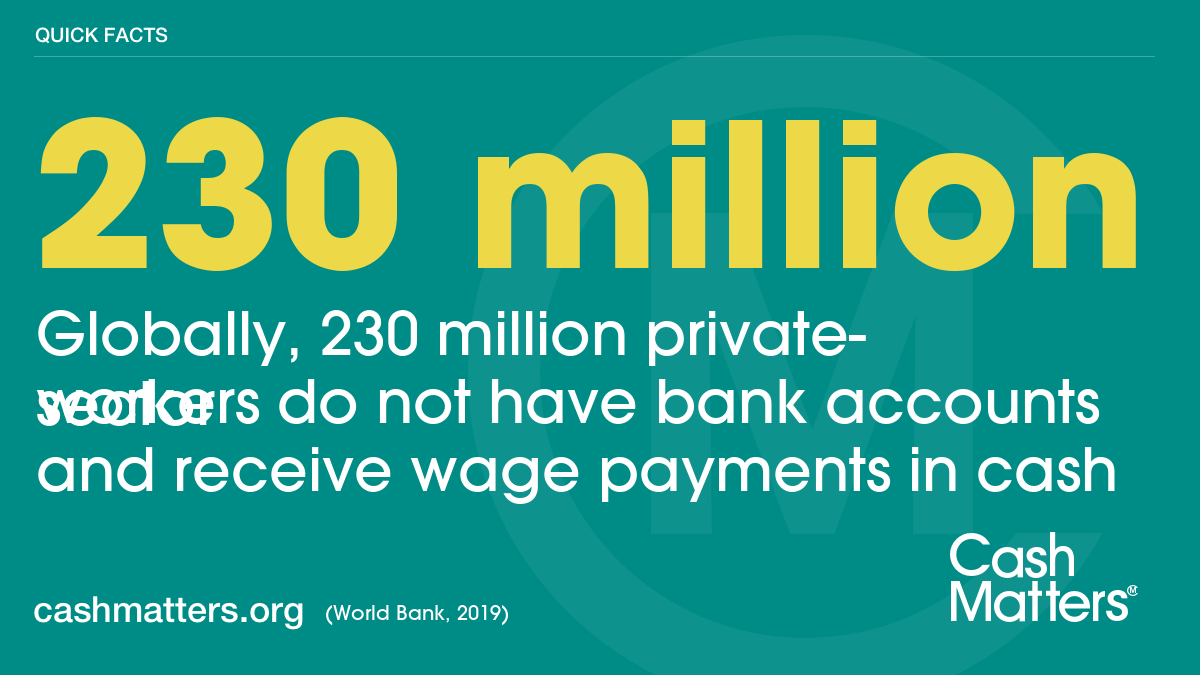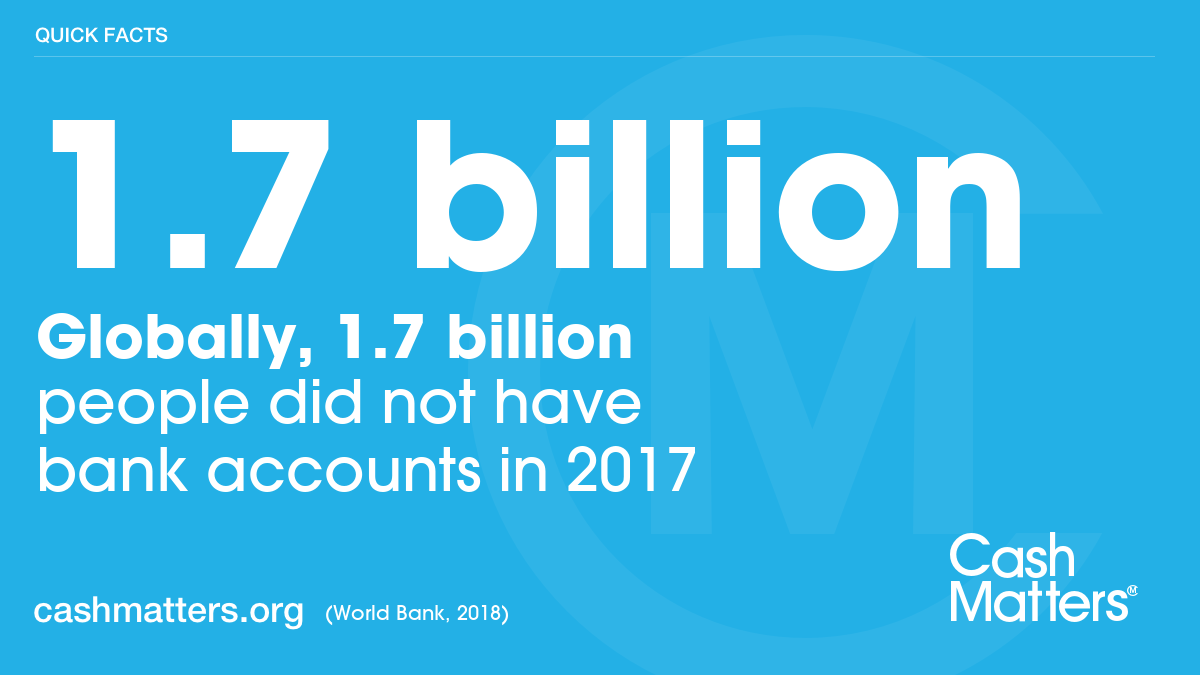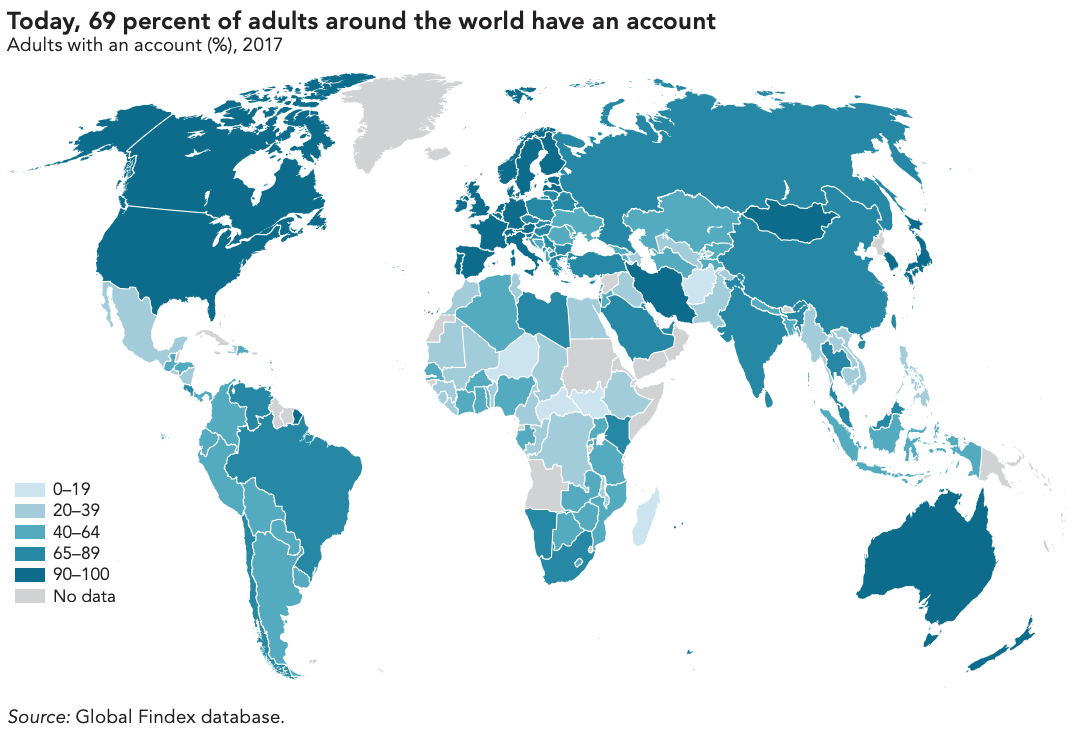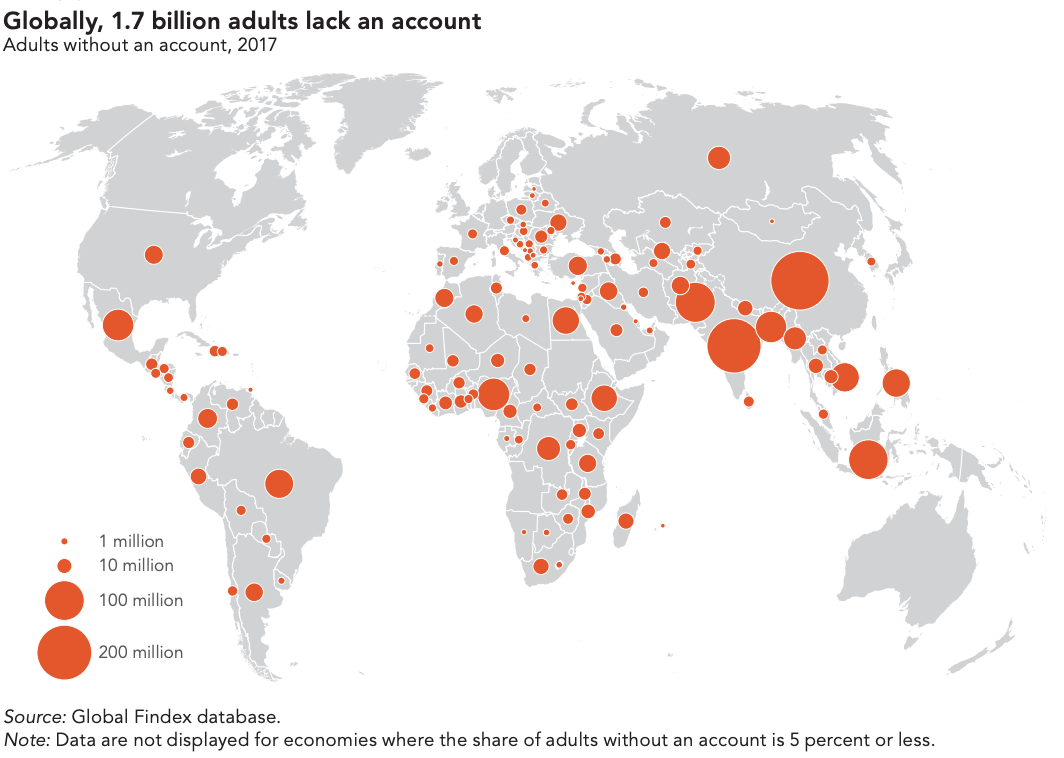
Bank ownership growing but gaps remain, finds "Global Findex Database 2017" (World Bank)
The database provides nationally representative, demand-side data on access to and use of accounts, credit, payments, and savings by adults age 15 and above in 144 economies. It is housed in the World Bank’s Development Research Group and funded by the Bill & Melinda Gates Foundation. It is the first public global database of demand-side indicators to track the financial lives of individuals over time
Key findings include
- Globally, 69% of adults – 3.8 billion people – now have an account at a bank or mobile money provider;
- Globally, 31% of adults – 1.7 billion people – remain unbanked;
- Bank account ownership is up from 62% in 2014 and 51% in 2011;
- From 2014 to 2017, 515 million adults obtained an account, and 1.2 billion have done so since 2011;
- While in some economies account ownership has surged, progress has been slower elsewhere, often held back by large disparities between men and women and between the rich and poor;
- Globally, 56% of all unbanked adults are women; and
- Half of unbanked adults come from the poorest 40% of households within their economy, the other half from the richest 60%.
Excerpt from The Global Findex Database 2017
Who remains unbanked—and reasons why
"Globally, about 1.7 billion adults remain unbanked—without an account at a financial institution or through a mobile money provider. Because account ownership is nearly universal in high-income economies, virtually all these unbanked adults live in the developing world. Indeed, nearly half live in just seven developing economies: Bangladesh, China, India, Indonesia, Mexico, Nigeria, and Pakistan (map O.3). Fifty-six percent of all unbanked adults are women. Women are overrepresented among the unbanked in economies where only a small share of adults are unbanked, such as China and India, as well as in those where half or more are, such as Bangladesh and Colombia."
"Poorer people also account for a disproportionate share of the unbanked. Globally, half of unbanked adults come from the poorest 40 percent of households within their economy, the other half from the richest 60 percent. But the pattern varies among economies. In those where half or more of adults are unbanked, the unbanked are as likely to come from a poorer household as from a wealthier one. In economies where only about 20–30 percent of adults are unbanked, however, the unbanked are much more likely to be poor." (p. 5)







